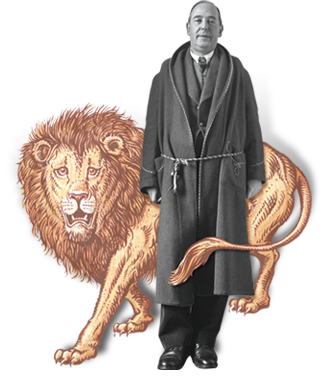Creation’s Weak Point
What’s your story? Does it begin in a garden, move to desolation, find itself in redemption, and get caught in the great hope of Heaven? That’s the Christian story. We read in Genesis of the first couple. They were pure and blameless, made in the image of God, and set down in a perfect place by God’s design. Every need was filled up in the presence of God and there were no longings.
How then did sin enter? In The Problem of Pain (“The Fall of Man”), Lewis says that it’s, “the turning of God to self,” that made it possible. Because being created makes a person somebody: a self, a will, a choice. Humanity saw what God created and essentially responded, No thanks. I think I can do it better. And in that response, we fashioned the idol of self, the worship, and preservation of me by me and for me.
We must turn away. “Since I am I,” says Lewis, “I must make an act of self-surrender, however small or however easy, in living to God rather than myself.” Then, we will be changing the arch of the fall and walking through the doorway of redemption.
Lewis says self-will is, “the ‘weak spot’ in the very nature of creation, the risk which God apparently thinks worth taking.” Why? Why does God allow self-will when it’s a wager He might lose? Because there’s an opportunity we might win. Without self-will there’s nothing to surrender; with it, we have the opportunity to freely give it up. Jesus says he came for the broken and needy–the weak lot–because those who are weak realize who can redeem their frailty.
Going further with Lewis’s idea of a “weak spot,” imagine if we were simply lulled into a moral code that dismissed our fallen state altogether and allowed us to continue on with no shadow of guilt, like some dystopian person in a trance? We might never see, never awake. Self-will must not get to such a grievous end. If it does, we may simply fall off the sleep and continue falling. Perhaps Satan likes this end because we never hear the call of God, either in the earthquake or the whisper (to bring in the account with Elijah).
Lewis says,
God saw the crucifixion in the act of creating the first nebula. The world is a dance in which good, descending from God, is disturbed by evil arising from the creatures, and the resulting conflict is resolved by God’s own assumption of the suffering nature which evil produces. The doctrine of the free Fall asserts that the evil which thus makes the fuel or raw material for the second and more complex kind of good is not God’s contribution but man’s.
In the Christian story, the acts of redemption and Heaven circle back to the beginning and make the weak points a testimony to His great love.


